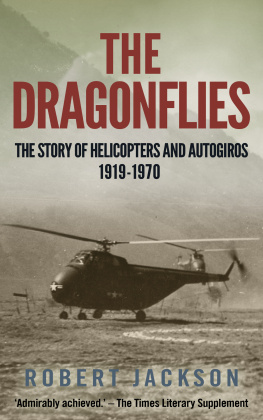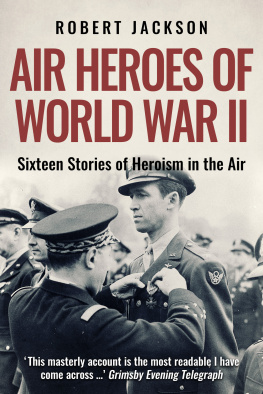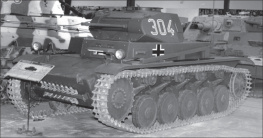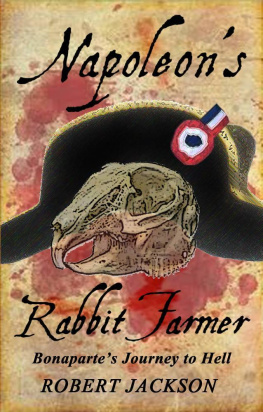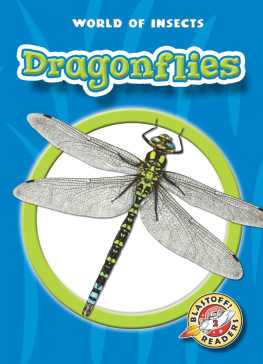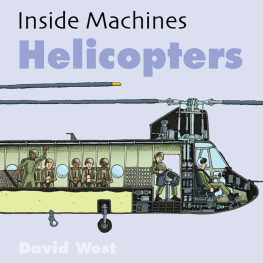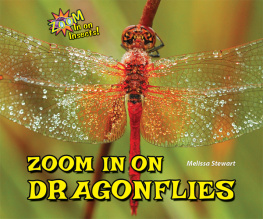The Dragonflies
Robert Jackson
Robert Jackson 1971
Robert Jackson has asserted his rights under the Copyright, Design and Patents Act, 1988, to be identified as the author of this work.
First published in 1971 by Arthur Baker Limited.
This edition published in 2017 by Endeavour Press Ltd.
Table of Contents
1. The Dream of Vertical Flight
The dream of flight is as old as the mind of man. Fifty thousand years ago, the hunters with the flint-tipped spears must have paused in their endless quest for food and turned their eyes skywards, with the dim glimmering of what we today know as envy, as the flights of migratory birds winged their way over the African plains before the ice that was creeping from the north.
Millennia passed. Man kindled fires and tilled the soil; fire kept his families warm and crops filled their bellies, and with the passing of one hunger there came another, greater want a thirst for knowledge and discovery, an endless urge that prompted Man to venture out on the sea in flimsy boats in search of new lands.
And still the birds winged their way southwards, and still Man turned his eyes skywards and wondered.
There were some who were not content to envy. They tried to emulate the birds, leaping from high places and flapping crude wings, only to smash their bodies against the earth because they could not know that the muscles of their bodies were too puny to defy gravity. Yet as long ago as the fourth century BC, countless children in ancient China were playing with a little toy whose principle would be used hundreds of years later to bring a whole new dimension to the science of flight; a simple round stick with feathers mounted on top, each feather twisted slightly so that it struck the air at an angle when the stick was spun, creating enough lift to enable the device to fly up into the air.
Two hundred years later, Archimedes of Syracuse the Greek physicist and inventor who was responsible for many scientific discoveries that laid the foundations of modern science hit upon exactly the same principle for use in a different medium. He perfected a rotating screw which, when fitted inside a cylinder, made an excellent water-pump. Rotated continuously inside the cylinder, the screw pushed against the water and moved it along, and this in turn gave rise to a reaction; the water resisted by pushing back. Two thousand years were to elapse before the principle that governed the operation of Archimedes screw in water was applied to another fluid-air-to produce a lifting force.
Meanwhile, the early pioneers of flight equipped themselves with flimsy planes modelled on the perfection of a birds wing and groped in darkness towards the achievement of their goal. Yet through the darkness shone brief flashes of light; the thoughts and inspirations of a handful of men who turned their minds from the flight of birds and envisaged other ways of enabling man to break the chains that bound him to the earth, who predicted aspects of flight that we today take for granted.
One such man was Roger Bacon, the English monk and scholar who believed that the only way to scientific truth lay through experiment. Born near Ilchester in 1220, Bacon studied at the feet of the great scholar Robert Grosseteste, Bishop of Lincoln, and later taught at Oxford and Paris. For twenty years he fought to establish a basis of scientific knowledge, urging his students to throw aside the shackles of religious superstition and think for themselves. In the end, predictably, he was broken by the all-powerful might of the Church and, weary and disillusioned, he became a recluse in a Franciscan monastery, forbidden by the Pope to carry out any more scientific experiments. But Bacons writings survived, and in addition to his well-known formula for the composition of gunpowder and a summary of his researches into aspects of science such as the field of optics they contain a number of remarkably accurate scientific predictions on the possibility of flight by men. For example, Bacon envisaged a flying machine constructed so that a man sits in the midst of the machine revolving some engine by which artificial wings are made to beat the air.
This one sentence is important, for it shows that Bacon knew the limitations of mans muscle-power; he realized that only by mechanical means could man have a remote chance of generating enough power to his artificial wings to lift himself off the ground. Even Bacons scientific knowledge, however, was too limited to expand the idea any further; it was to be another six-and a half centuries before his thoughts were at last translated into practicality by the advent of a suitable motive force the petrol engine.
Two hundred years after Bacons death, another great thinker turned his attention to the problem of human flight: Leonardo da Vinci, who appears to have been preoccupied with the subject for a decade of his life, between 1495 and 1505. Like Bacon, Leonardos ideas were years ahead of his time; unlike Bacon, he brought a far from inconsiderable engineering knowledge to the task in hand. He was the first to expound the true principles of flight; he knew that both water and air were fluids, and that the behaviour of a solid body moving through both media must be essentially the same. In 1505 he wrote a remarkably detailed treatise on the flight of birds, a work of genius written in a secret backhand script. The smell of burning faggots was a constant reminder to free-thinking scientists of the time that the Church had an unpleasant way of dealing with what it considered to be heretical attitudes, and Leonardo took great pains to conceal what he was doing in the way of scientific research. The result was that much of his scientific work was lost to the world for nearly four hundred years after his death; had it been otherwise, later pioneers of flight might have been spared a great deal of heartbreak and tragedy.
Leonardo knew that a bird with outstretched wings could not fall vertically through the air; it had to glide down at an angle. He also knew that birds made use of their wings and tails as airbrakes to check their descent, and that they also took advantage of rising currents of air to gain height. He even understood the importance of sufficient height in enabling a bird in flight that suddenly loses its equilibrium to recover safely.
From his observations, Leonardo concluded that the flight of a bird through the air was similar in many respects to the motion of a fish in water. If this was the case, the Archimedes Screw principle might equally well be applied to the air to produce motion if the screw could be turned fast enough. With uncanny perception, he realized that the desired result would be obtained not from the motion of the screw itself, but from the resistance of the air against it; this would tend to push the screw in the opposite direction and a lifting force would be created. When force generates swifter movement than the flight of the unresisting air, this air becomes compressed after the manner of feathers compressed and crushed by the weight of a sleeper. And the thing which drove the air, finding resistance in it, rebounds after the manner of a ball struck against a wall.
Leonardos discussion on the possibilities of a lifting screw accounts for only a small part of the 35,000 words he wrote on the subject of flight, but he made a detailed sketch of the idea among the hundreds included in his notebooks. His conclusion that a screw could be used to provide lift, If the screw be made of linen of which the pores be stopped up with starch (in other words, made impermeable) and be turned swiftly, was the logical mind of an engineer at work, not a sudden flash of inspiration. But the idea hardly surprisingly went no further than this; he made no reference to the screw being given any form of stability and does not appear to have realized what effect torque would have had on a practical machine.

